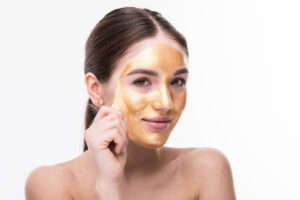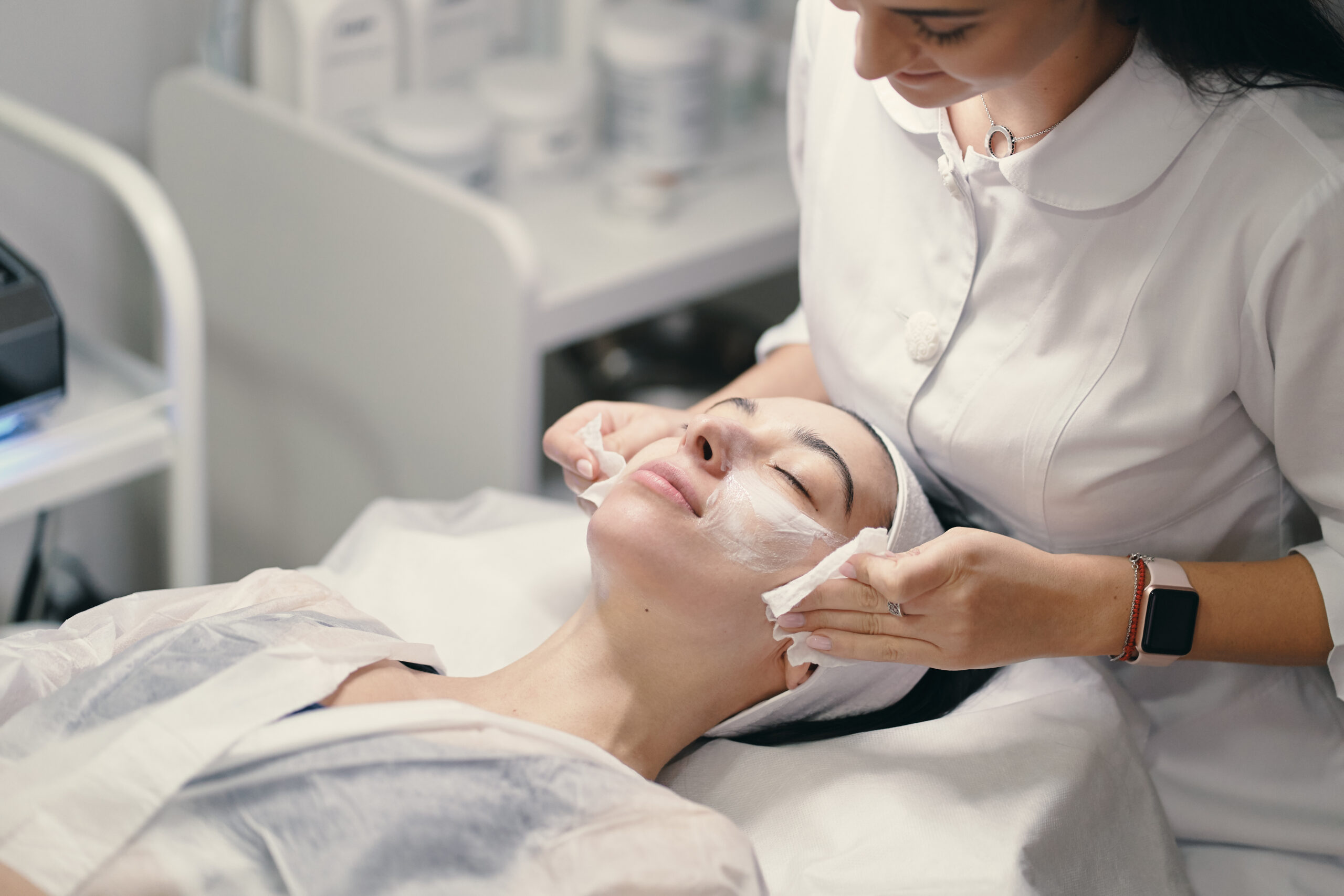Hydrafacial or chemical peels are both common facial procedures that are particularly effective at producing skin that is radiant, healthy, and youthful looking. Although they both function differently and are suitable for different skin types and issues, both are great choices for skin rejuvenation. So which one is best for you? Let’s examine each treatment’s advantages of Hydrafacial or chemical peels, break it down, and help you in selecting the best one for your particular skin issues.
Understanding Hydrafacial
HydraFacial is a popular non-invasive treatment that involves deep cleansing, exfoliation, extraction, and hydration of the skin. It uses vortex technology which removes dead skin impurities from your skin, leaving it clean and hydrated. It includes 4 facial treatments in 1 session. Unlike traditional facial treatments that can have different effects depending on your skin type. The HydraFacial provides consistent results and can be used on all skin types.
How Does It Work?
The HydraFacial cleanses and exfoliates the skin, removes pollutants from the pores, and applies hydrating serums using a vortex-fusion technology. The four main steps are as follows:
- Cleansing and exfoliation: Remove surface dirt and dead skin cells smoothly.
- Mild chemical peel: Without irritating the skin, a combination of glycolic and salicylic acids removes dirt and grime from pores.
- Painless extraction: A vacuum-like tip gently lifts out blackheads and excess sebum without discomfort.
- Hydration and antioxidant infusion: The treatment delivers nourishing serums—like hyaluronic acid, peptides, and antioxidants—to leave the skin radiant and hydrated.
Understanding Chemical Peels
Chemical peels resurface the skin by exfoliating the outermost layers of the epidermis using acids. Depending on their depth—superficial, medium, or deep—they effectively treat a wide range of skin concerns. Additionally, the procedure stimulates skin rejuvenation and reveals smoother, more even-toned skin underneath. However, it’s important to choose the peel’s strength and depth wisely, especially for darker skin tones.

Types of peels:
- Superficial Peels: These peels target the outermost layer of the skin
- Medium Peels: These penetrate both the outer and middle layers of the skin.
- Deep Peels: These reach deep into the lower and middle layer.
How Does It Work?
Dead cells, dullness, and damaged tissue are eliminated as the acid solution dissolves the epidermis’ outermost layers. The skin beneath becomes smoother, brighter, and more evenly toned as the skin peels off over a few days.
Comparison Between Hydrafacial and Chemical Peel
Procedure Type:
- Hydrafacial: A specialized device performs the facial by infusing serum infusion and using vortex suction to cleanse the skin.
- Chemical Peel: Dead skin is removed by topical use of an acid-based exfoliant.
Procedure Time:
- Hydrafacial: It takes 30-60 minutes.
- Chemical Peel: It takes 30minutes to an hour.
Suitable:
- Hydrafacial: It is suitable for all skin types, including sensitive skin.
- Chemical Peel: Depending on the kind, sensitive skin may not be a good candidate for deeper peels.
Results:
- Hydrafacial: It provides immediate results.
- Chemical Peel: It begins in two to three days and is completed in seven to ten days.
- Hydrafacial: Apply sunscreen, and wear sunglasses.
- Chemical peel: Keep away from harsh products and the sun; hydrate and apply SPF frequently.
Who Should Consider Hydrafacial?
It is best for:
- First of all, it is perfect for getting a glow instantly with no recovery time.
- In addition, it is ideal for getting ready for important occasions like parties or weddings.
- Moreover, it is suitable for rough, flaky, or dry skin that needs to be hydrated.
- Also, for sensitive skin, including rosacea, it is safe and mild.
- Finally, it is recommended for people who prefer consistent monthly skincare care to drastic procedures.
Who Should Consider Chemical Peel?
A chemical peel is best option if:
- Firstly, it is ideal for reducing deep pigmentation, uneven texture, or acne scars.
- Moreover, it is perfect for anti-aging benefits when deeper exfoliation is required.
- Additionally, it is suitable for people who don’t mind a little peeling and minimal recovery time.
- Furthermore, it is effective for treating sun damage, wrinkles, and fine lines.
- Lastly, it is recommended to evaluate the skin’s acid tolerance while being evaluated by a dermatologist.
Which One Should You Choose?
There isn’t one, perfect solution. Your skin’s objectives, and expected result will determine the optimal course of action.
• Choose a HydraFacial:
– If you’re looking for a fast, relaxing, and glow-enhancing treatment.
– You want apparent radiance and no downtime.
• Choose a Chemical Peel:
– Deeper skin problems, such as pigmentation or acne scars, require treatment.
– Peeling and some relaxation are acceptable to you.
Conclusion:
Both Hydrafacial or chemical peels have amazing skin advantages; however, the best option for you will ultimately depend on your goals, lifestyle, and particular skin conditions. If you are searching for a mild, downtime free-procedure HydraFacial is a great option as it rejuvenates your skin almost instantly. On the other hand, chemical peels might produce visible results if you’re looking for deeper exfoliation, long-term texture improvement, or for treating pigmentation and acne scars.
If you are considering these treatment, please visit Aestheticure. Our best expertise and experienced surgeons will provide you with the best treatment and proper care and also they will guide you through the procedure, provide you with thoughtful, honest answers to all of your questions.
For more information or to schedule a consultation, feel free to Contact Us!







